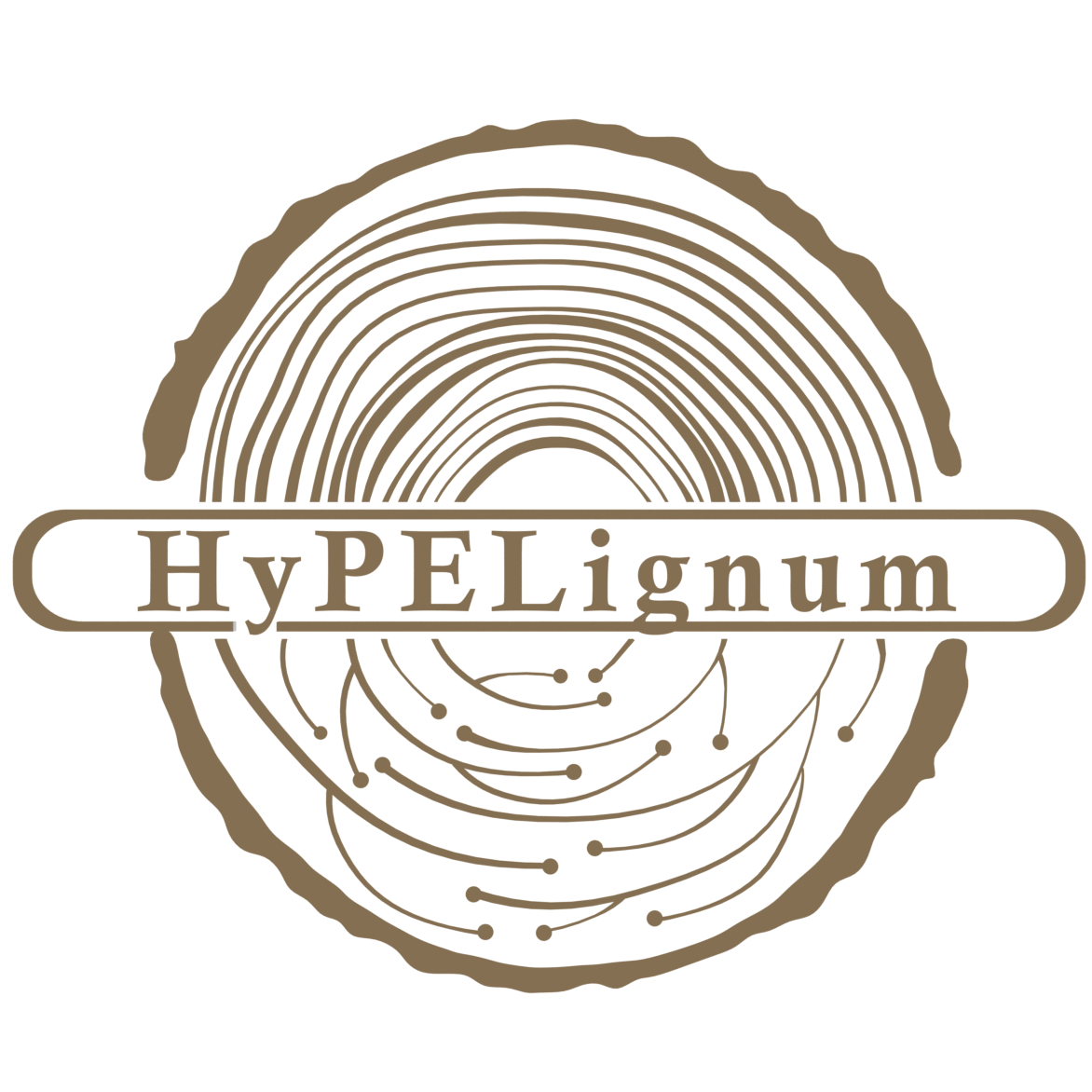
HyPELignum
Projects
Information
Reimagining the entire life-cycle of electronics—from raw material sourcing to end-of-life management—is essential for building a sustainable economy and society. The HyPELignum project addresses this challenge by exploring a holistic approach for manufacturing electronics with net zero carbon emissions, centred around additive manufacturing and wood-derived materials. Innovating with Wood-Based Materials
Wood has long been a cornerstone of construction and household applications, and its biogenic nature makes it critical for Europe’s carbon-neutral ambitions, aligning with the New European Bauhaus initiative. HyPELignum goes further by creating novel materials derived from wood feedstock, such as lignocellulosic composites, bio-derived resins, and functional compounds incorporating abundant, low-impact metals. These new materials expand the technological possibilities for electronics while maintaining a strong focus on environmental responsibility.
Key Pillars of the Project
Wood as a Substrate for Additive Manufacturing: Leveraging wood’s natural versatility as a base for electronic devices, enabling innovative designs while keeping environmental impact low.
Novel Functional Materials: Developing a wide range of new materials derived from wood waste and bio-polymers, including advanced resins, lignocellulosic composites, and functional elements that reduce dependency on critical raw materials.
Energy-Efficient Microchips: Designing µchips optimized for minimal energy consumption, capable of driving integrated sensing systems with high performance and low environmental cost.
Recycling and Circularity: Investigating methods to recycle wood substrates and recover functional electronic materials, supporting the transition toward circular electronics.
Sustainability Assessment at the Core
HyPELignum places sustainability at the heart of innovation. Life-cycle assessments, biodegradability studies, and toxicity evaluations provide a deep understanding of
